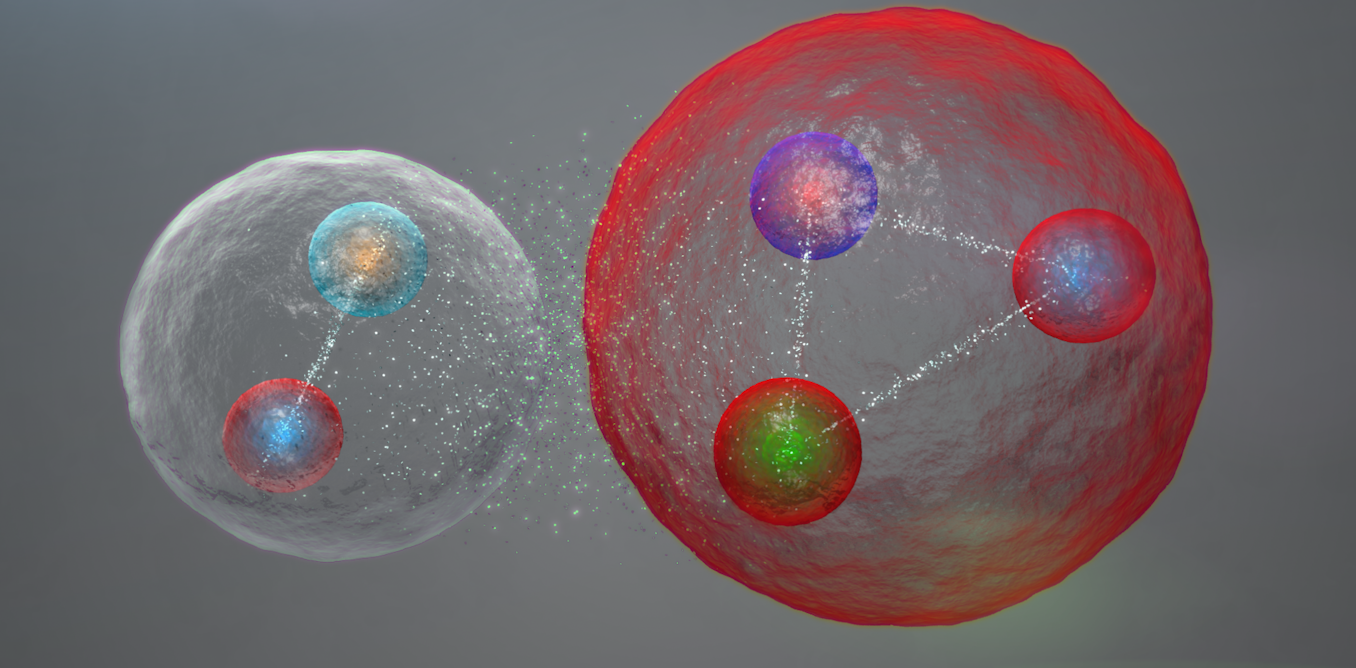
Researchers at CERN discovered three new sub-atomic particles. The LHCb collaboration observed the first-ever pair of tetraquarks and a new type of pentaquark. Here’s more on the particles seeking to unlock the secrets to the building blocks of the universe.
The hydrogen Collider at CERN helps make a discovery
The Large Hadron Collider beauty (LHCb) experiment — which is investigating the slight differences between matter and antimatter by studying a type of particle called the “beauty quark”, or “b quark”, has observed three never-before-seen particles. Additionally, on July 5, the CERN announced the LHCb collaboration observed the first-ever pair of tetraquarks and a new type of pentaquark.
Conseil Européen pour la Recherche Nucléaire (CERN), is the European Organisation for Nuclear Research housing the LHS. The LHS is the largest and most complex collider in the world.
“The three “exotic” additions — a new kind of “pentaquark” and the first-ever pair of “tetraquarks” — to the growing list of new hadrons found at the LHC will help physicists better understand how quarks bind together into these composite particles,” stated CERN in a release.
The LHC, re-ignited after three years in April, was cranked up to unprecedented levels of energy on July 5. The collider is smashing protons at almost the speed of light. which could throw up “new” physics beyond the Standard Model.
What are quarks?
Quarks are elementary particles with six flavors- charm, strange, up, down, top, and bottom. They usually combine together in groups of twos and threes to form hadrons such as the protons and neutrons that make up atomic nuclei.
Additionally, they also combine into four-quark and five-quark particles known as tetraquarks and pentaquarks. Scientists first made a prediction on this six decades ago. However, colliders such as the LHCb first observed it in the last two decades.
What are these new sub-atomic particles?
Moreover, as per the CERN release, tetraquarks and pentaquarks make up most of the exotic hadrons discovered.
Two years ago, however, the LHCb experiment discovered an exotic tetraquark made up of two charm quarks and two charm antiquarks, and two “open-charm” tetraquarks consisting of a charm antiquark, an up quark, a down quark, and a strange antiquark.
And last year it found the first-ever instance of a “double open-charm” tetraquark with two charm quarks and an up and a down antiquark, CERN said.
The first kind was also observed in an analysis of “decays” of negatively charged B mesons. It is a pentaquark made up of a charm quark and a charm antiquark, and an up, a down, and a strange quark,” stated CERN.
“The more analyses we perform, the more kinds of exotic hadrons we find,” stated Niels Tuning. Tuning is the physics coordinator for the LHCb.
“We’re witnessing a period of discovery similar to the 1950s when a ‘particle zoo’ of hadrons started being discovered and ultimately led to the quark model of conventional hadrons in the 1960s. Hence, we’re creating ‘particle zoo 2.0’,” he added.
